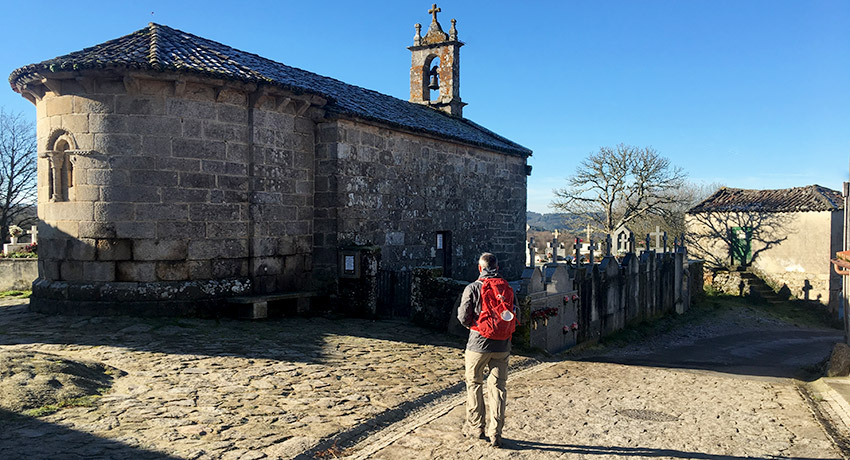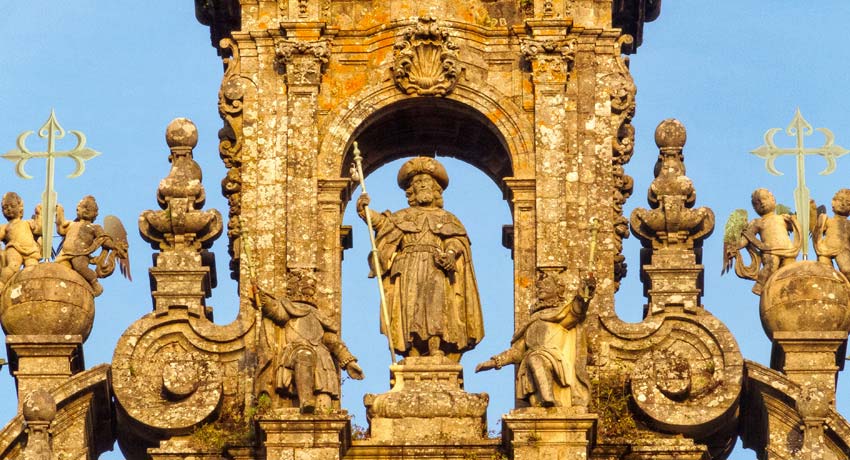St. James' way is the route that pilgrims have been following for more than 1,000 years to visit the tomb of the Apostle in the city of Santiago de Compostela. Known in Spanish as "El Camino de Santiago" or "El Camino", it is a network of scenic routes through small villages that link a multitude of places in Europe and Spain with the city of Santiago in Northern Spain.

Most travelers choose to complete the later stages of the French Camino or French route, which was recognized as a World Heritage site by UNESCO in 1985.
Who was St. James?
Saint James, one of Jesus’ twelve disciples, was born in Bethsaida and worked as a fisherman in the area of the Genesareth Lake. Together with his younger brother (St. John), Peter and Andrew, they became the first four followers of Jesus. As one of Jesus' closest companions he witnessed first-hand many of the episodes told in the New Testament.
An active member of the first Church of Jerusalem, he traveled from the middle east to the Iberian Peninsula preaching the good news. While in Spain (41-42 A.D.), James had a vision of Mary telling him that Jesus wanted him to build a Church and she gave him a pillar with her image to be placed in the sanctuary. St. James then built the first ever Christian Church in the world. Once completed, he followed Mary’s request to return to Jerusalem where he knew he would be martyred at the hands of King Herod Agrippa in the year 44 A.D.

The Apostle's Tomb
His disciples took his body back to Spain and buried him in a tomb in Libredon. After being forgotten for over 800 years, in the early 9th century a peasant was walking in the woods when he heard strange sounds and saw lights at the place where the tomb was. Upon its discovery, King Alphonse II ordered a Church built on the site and the first visitors to the tomb started arriving shortly after.
The peasant that found the tomb described the place as “a field filled with stars” , in latin "Campus stellae", which later evolved to the Spanish "Compostela".
St. James, the patron saint of Spain, was frequently invoked for protection against the moors during the Spanish Reconquista wars (711 - 1492 A.D.). Legend has it that the apostle appeared atop a white shining horse, sword in hand, and became known as Santiago Matamoros or "James, the moor slayer" helping Christian kings in a battle against the Arab troops at Clavijo in 844 A.D. With his support, the Christian kings managed to win several battles despite being outnumbered and St James' fame extended beyond Spain's borders.

The Pilgrimage
By the 10th century, the pilgrimage to Compostela to visit the Apostle's tomb was well established and the Spanish Kings realized that the route had to be protected as it became a key thoroughfare for commercial and military purposes. They built roads, bridges and support structures for pilgrims like hospitals, many of which remain to this day. In 1122, Pope Calixtus II declared Holy Years of St. James those years in which July 25th falls on a Sunday. Since then, thousands of pilgrims started arriving from many parts of Europe and Spain, reusing ancient roman roads and causing multitude of towns to grow around the route.
Nowadays, over a quarter million people a year complete this exciting journey and arrive at Santiago on foot by means of the way of St. James.
Throughout the centuries, the popularity of the pilgrimage experienced up and downs, given the rise of Protestantism in Europe and events like the plague in the 14th century, but nonetheless it remained a popular journey. In the 20th century, it experienced a revival with visitors as notable as Pope John Paul II, who led mass in El Camino in 1989 on world Youth Day. Benedict XVI made the pilgrimage to the Apostle's tomb as well in later years.


